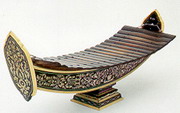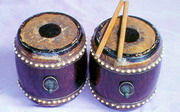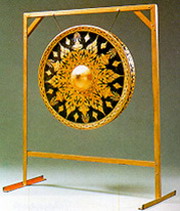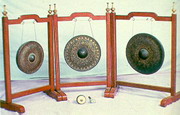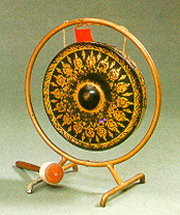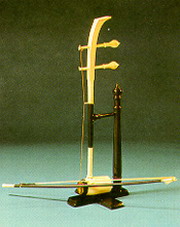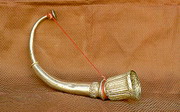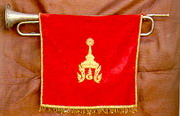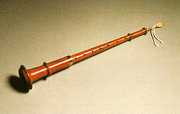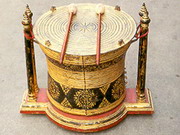| . |
Thailand Musical
Instruments Companies serve two distinct functions. Firstly there
are some manufacturers of musical instruments however these tend to be
Thai instruments largely for use in Thailand with a small proportion
being exported either to be used by Thai musicians abroad or as
decorative items and souvenirs.
The
second function is as importers and distributors of "western" musical
instruments. Because of the high prices of these imported instruments
there seems to be a healthy market in second hand instruments. I have
come across many shops selling second hand guitars, brass instruments
like trumpets and orchestral brass instruments. Popular also are reed
instruments like clarinets and saxophones.
Indeed there is a royal connection to
music in Thailand. His Majesty The King of Thailand plays a saxophone
that has been given to him by Benny Goodman. Music plays an important
part in the life of the Thai royal family. His Majesty the King Bhumibol
Adulyadej is an internationally -recognized jazz musician with numerous
original compositions to his credit, one of which was featured in a
Broadway show in the 1950's.
Her Royal Highness Princess Maha Chakri
Sirindron is an accomplished performer on several classical Thai musical
instruments, while Her Royal Highness Princess Chulabhorn has made
several popular music cassette tapes to raise funds for charity. d database
purchase details. |
|
|
Keyboards, pianos and electronic organs
are also popular but are nearly 100% imported items from either Japanese
manufacturers or again second hand instruments imported from places like
Taiwan and China.
Bangkok Companies is a full service
product sourcing company in Thailand. For All your
musical instrument needs please email
bangkokcompanies@gmail.com with your requests.
Krachap Pi
Since ancient times, the Thai people have known how to make musical
instruments or to copy the patterns of others and adapt them to their
own uses. In fact, there are several kinds of musical instruments which
the Thais apparently devised before they came in contact with the
culture of India, which was widespread in Southeast Asia before they
migrated there.
Later, when the Thai people were establishing their kingdoms and had
come into contact with Indian culture, particularly with Indian
instruments which the Mon and Khmer cultures had absorbed first, they
assimilated this musical culture into their own.
Kokg Song Na (two drum faces)
From this contact, the Thais creats several new kinds of musical
instruments such as the phin, sang, pi chanai, Krachap pi, chakhe, and
thon, which are mentioned in the Trihumikatha, one of the first books
written in Thai, and on a stone inscription from the time of King
Ramkhamhaeng of the Sukhthai period. Some songs of the Sukhthai period
are still sung at present, such as Phleng Thep Thong.
During the Ayutthaya period the instrumental ensemble was composed of
four to eight musicians. Songs became much longer and singing technique
was improved. Many Ayutthaya songs were composed in a from of musical
suite called Phleng Rua, which was a series of songs. Poets contributed
lyrics in the form of short stories, mostly from the Ramakian. Many
Ayutthaya songs are still employed in Thai plays today.
Sor-U
In the beginning of the Bangkok period, after a long period of war,
there was a remarkable revival of Thai arts, especially music and drama.
The size of the instrumental ensemble was enlarged to 12 musicians and
several masterpieces of Thai literature were produced as theatrical
performances accompanied by music. Beautiful lyrics written by
contemporary poets were fitted into melodies of the Ayutthaya period.
All Thai musicians in the past received their training from their
teachers, through constant playing and singing in their presence. With
nothing else to rely upon except their own memory, it was only through
much hard work that they gained their technical experience and practical
knowledge in playing and singing.
Tone Drum
In all, there are about 50 types of Thai musical instruments, including
many local versions of flutes, stringed instruments, and gongs used for
all kinds of occasions: festivals, folk theater, marriages, funerals,
and social evenings after harvesting.
|
. |

